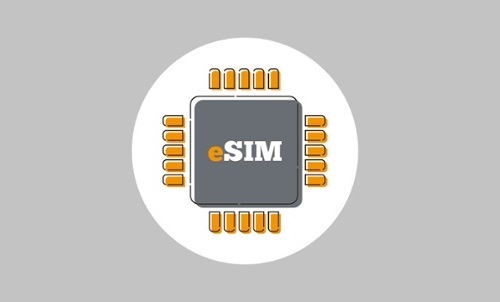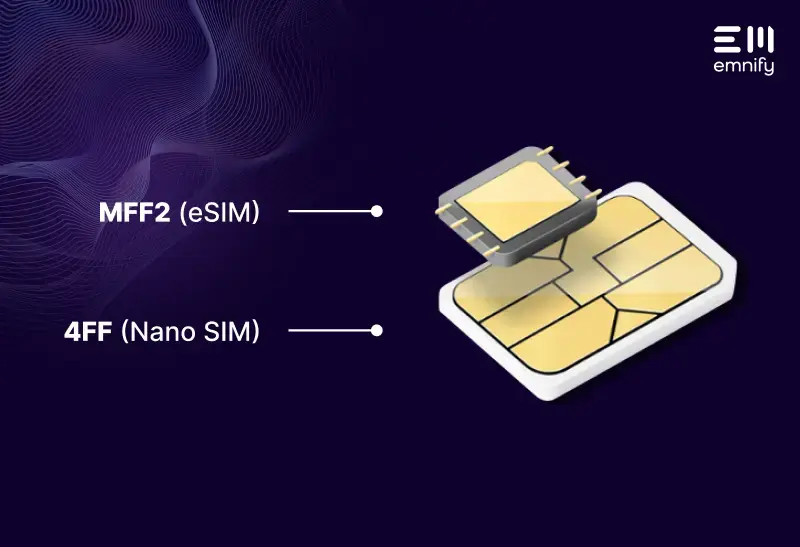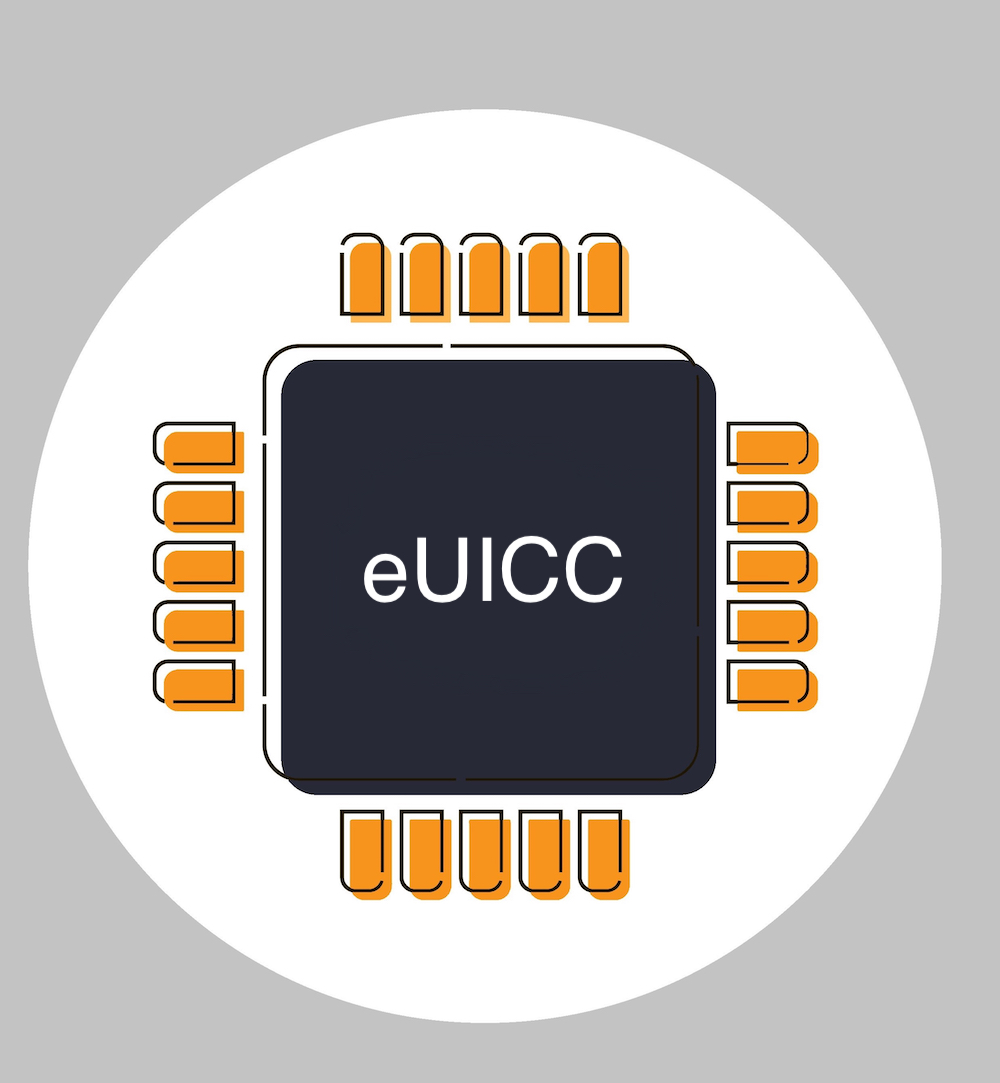

Quick definition: eUICC stands for Embedded Universal Integrated Circuit Card. It’s a component of a Subscriber Identity Module (SIM) card that lets you switch Mobile Network Operators (MNOs). This technology has been a game changer for cellular IoT because it simplifies global deployment and mobile machine-to-machine applications.
Instead of changing out SIM cards or installing different cards for different deployments, an eUICC gives consumers and IoT manufacturers the ability to provision the SIM with a new operator profile OTA.
For consumers, the process is relatively simple to use and low cost. But the initial M2M version was designed for the automotive industry and makes downloading or adding a new profile more complex because you need to either own a subscription management platform (SM-SR) or use an operators’ one. If you use the SM-SR of your operator everytime you want to integrate a new operator there is significant additional setup time and costs involved.
Due to these drawbacks the GSMA is together with the subscription manager platform vendors defining a new standard that simplifies the profile update also for M2M use cases. This new standard will be similar to the consumer use case.
While eUICCs are often called eSIMs (Embedded Subscriber Identity Module), eSIMs can also refer to a specific SIM form factor—the MFF2, which is the only embeddable form of the module.
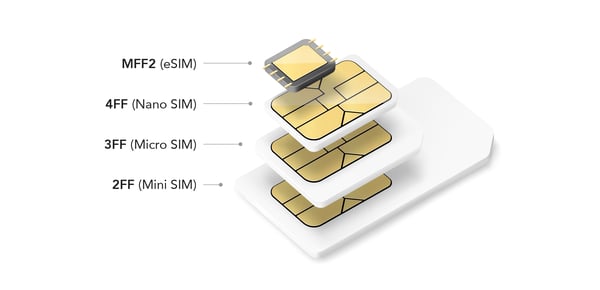
Benefits of an Embedded Universal Integrated Circuit Card
Installing an eUICC on your device gives your application several major advantages. They all come from the eUICC’s ability to store multiple Mobile Network Operator (MNO) profiles and switch between them remotely.
Here’s how that works and what it means for your business.
Multiple MNO profiles on a single SIM
The eUICC is not a hardware concept; it is a feature concept for the way SIM profiles are managed. A traditional UICC contains a single MNO profile, which usually has 64KB or 128KB of memory. An eUICC can host multiple profiles and requires a minimum memory of 512KB.
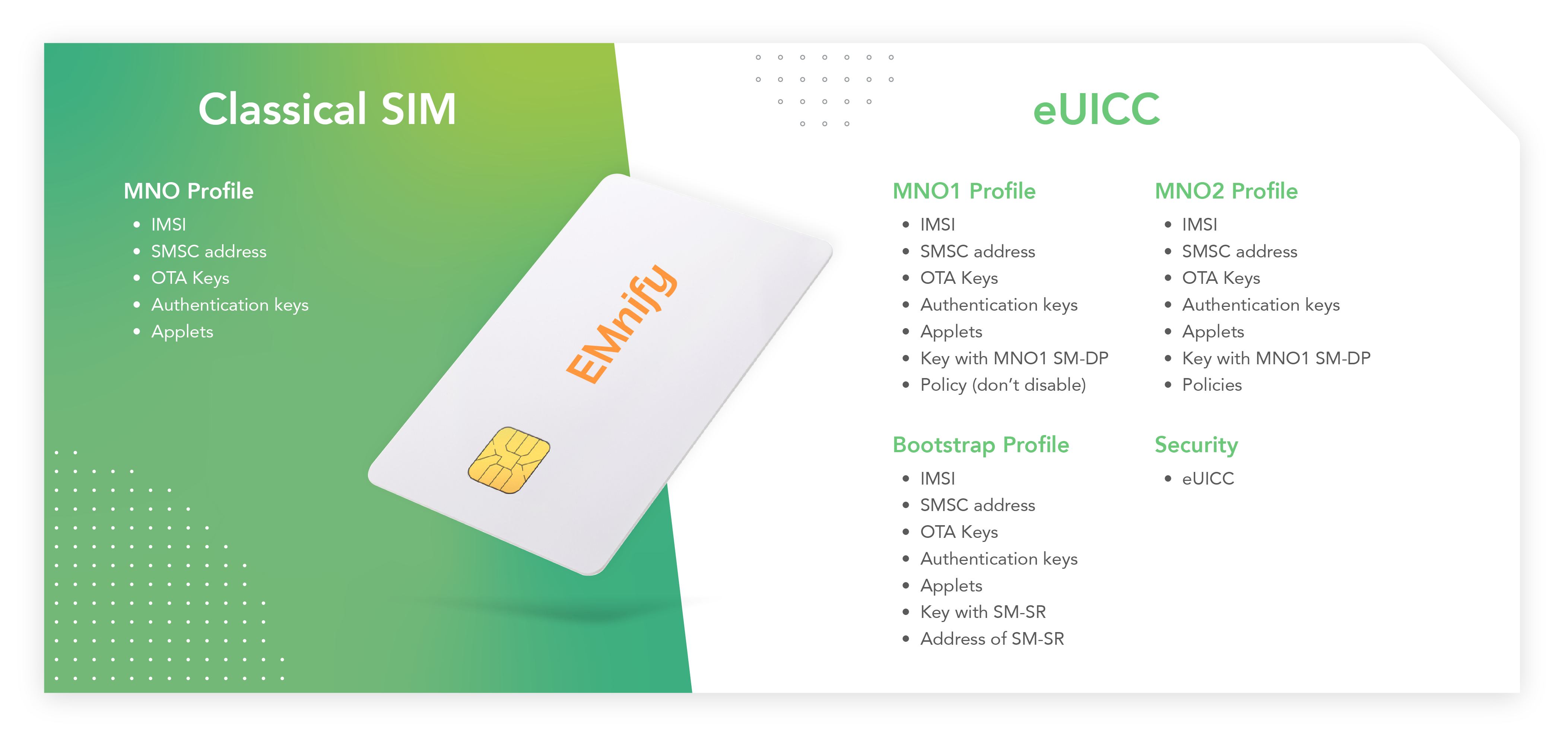
The profile includes the information the MNO needs to enable connectivity. Traditionally, these profiles are locked to the SIM—meaning if you change operators, you need to replace the SIM.
Not only can eUICC’s host multiple provider profiles, but they also have space for additional applications, such as security features.
A single SIM works for every deployment
For M2M deployments where devices are distributed globally and in remote locations, coordinating the correct installation of the SIM at the correct time can pose logistical nightmares. Installing a SIM with an eUICC during the manufacturing stage also saves costs on production and distribution as well as inventory as you only require a single SKU.
Prepare your IoT business for success
In IoT, it’s important to understand how different technologies impact your connectivity, integrations, and costs. In consumer situations, eUICCs are a cost-effective method of switching operator profiles. In the M2M use cases it requires an upfront investment to create new integrations and involves changing some of your systems.
Another option is to use multi-IMSI SIM cards that already provide several operator profiles that automatically switch when entering a country - while staying on the same communication platform.
At emnify we enable manufacturers to build truly global IoT devices. If you have any questions relating to eUICCs and the best platform for enabling this technology, our team is always happy to help and offer advice.
Switching MNOs with an eUICC
In the last 20 years of GSM connectivity, there has never been a development like this. The eUICC has been dubbed the next evolution of the SIM because it enables users to change provider profiles OTA, revolutionizing the way SIM cards connect globally.
But there’s still one major consideration you need to keep in mind when initiating an eUICC deployment: your plan for switching MNOs.
An eUICC makes it possible to change MNOs remotely. But it’s really only convenient for consumers. For M2M manufacturers, it’s both expensive and difficult to reintegrate your service profile and associated rules and controls into a new MNOs infrastructure.
Your connectivity management, billing, and provisioning systems all depend on your service profile and these established rules and controls. It’s these dependencies and the potential interruption to them in the event of changing your MNO that you need to plan for when initiating an eUICC deployment.
When selecting a SIM provider and an IoT connectivity platform, you need to understand how they will aid the potential switching process and affect your systems.
The following questions can help you preempt any issues with the controls your connectivity system depends on:
- Will your connectivity provider enable you to connect globally, or will you require multiple service contracts with MNOs?
- If you need to switch the MNO for a specific SIM/device, what other aspects of your connectivity system will change? What is the process of integrating your service profile into the new MNO’s infrastructure?
- What external connections may be interrupted as a result of switching? For example, will there be changes to your addressing settings (IP address, phone number), and how will this affect the services that connect to your devices? What will the new connectivity management portal look like? How will you ensure that the information you need will be there? What about the API for SIM activation and deactivation?
Get in touch with our IoT experts
Discover how emnify can help you grow your business and talk to one of our IoT consultants today!
Tobias Weber
More than six years of experience as a senior editor in the realm of smart home, connectivity and Internet of Things. And still as curious as on the first day.

